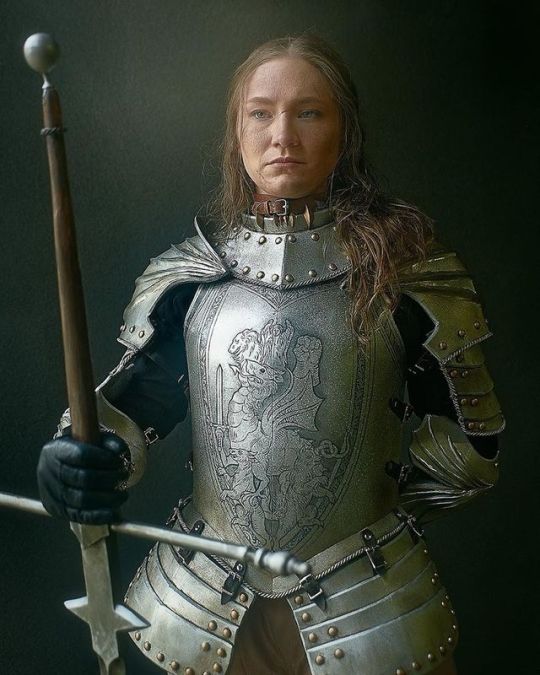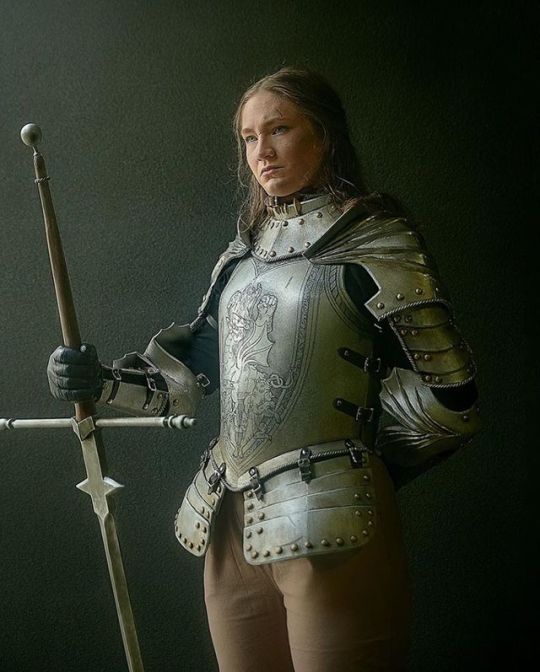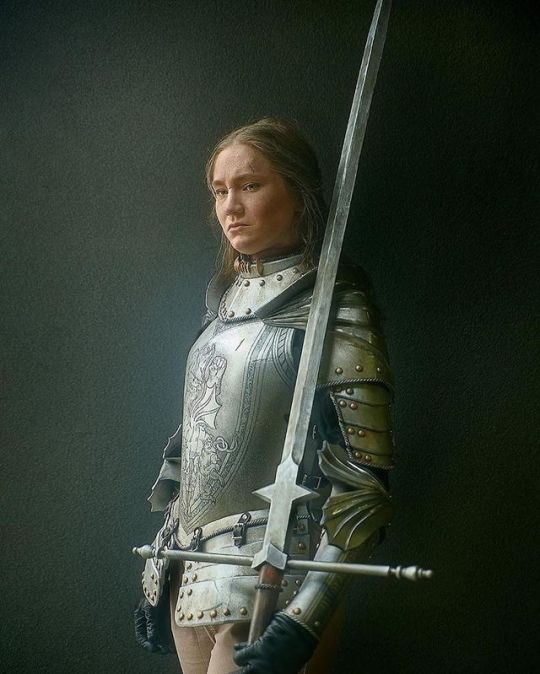Text
Post Practice Pondering - I sorta remembered this time!
Practive was last night, but close enough. Last night was probably the closest I've ever been to being a coach at this new club and ya know, it was pretty nice. The students actually seemed to care what I had to say and I even got them to play a truncated version of the "3 Fives" game. I hope they saw the value of the game. Their fencing got a lot better after we started and you could see the gears turn as we reflected on their bouts. Don't want to toot my own horn, but I think I really helped them out, at least when it came to explaining how to "properly" think about their fencing in a productive manner. They still have a long way to go- their form is trash, their en guardes need fixing, and they all need to grind lunging until they collapse- but it was a step. Will this lead to me formally becoming a coach for the club? Who knows. But I hope it demonstrated my value to the students and perhaps last night will provide some leverage for me if I ever get bold enough to propose the idea myself. If that doesn't happen, I think I'll just leave the club.
4 notes
·
View notes
Photo

A beautiful swept-hilt Rapier, attributed to Andrea Ferrara,
OaL: 49.8 in/126.5 cm
Blade Length: 42 in/106.8 cm
OaW: 11.2 in/28.5 cm
Blade Width: 1 in/2.6 cm
Weight: 3.4 lbs/1540 g
Italy, ca. late 16th century, housed at the Swedish Royal Armouries.
116 notes
·
View notes
Text
PPP - OH edition
Oh shit, I forgot to do the PPP after practice Thursday. Oh whale. This past Thursday, I had my first practice outside of NC. It was not good. I hadn't fixed my weapons because I'm lazy and I figured my new club would have weapons for me to use. They did, but not for lefties, which is pretty short-sighted of them. The club "curriculum" itself was laughable. "Experienced" fencers did 2 minutes of warm-up footwork, then went to open bouting. Nobody's footwork was good (not even my own), so maybe I should cut them some slack there. Open bouting was trash, due to aforementioned lack of weapon. I did borrow a righty French grip from someone and tried to fence with that, which was sort of fun, but rough. However, in my eternal quest to interject my opinion everywhere, I ended up giving some newbies some advice and may have landed myself a student. She would ask me what I thought about her fencing after every bout and even asked what it would take for me to keep showing up after I told her I may not. It was nice, I see now why Coach keeps doing it even though it's clearly frustrating for him. So yeah, club sucked, but it was also good. I think I'll go back Thursday.
0 notes
Text
My LPs right before I snap them.
When your weapon blade is getting a little old and has a stubborn bent in it

44 notes
·
View notes
Photo

Two handed sword called “Braunschweigervärd “, Germany, early 17th century.
from The Livrustkammaren, Sweden
688 notes
·
View notes
Text


A beautiful Rapier with gilt accents,
OaL: 39.5 in/100.2 cm
Width (Blade): 1.1 in/2.7 cm
Weight: 2.3 lbs/1.03 kg
German blade, ca. 1610, Italian hilt, ca. 1540, housed at the Wallace Collection.
163 notes
·
View notes
Photo
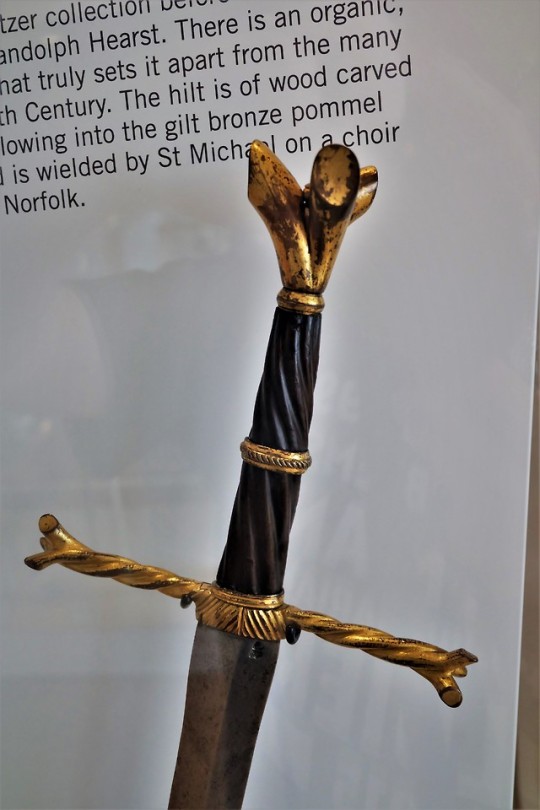


Writhen Sword from Germany dated around 1480 on display at the Royal Armouries in Leeds
This sword was part of the Spitzer collection before being acquired by media magnate, William Randolph Hearst (famous for using sensationalist news headlines to promote U.S. military adventurism in South America). There is an organic natural quality to this sword that sets it apart from the many utilitarian weapons of the 15th century.
The hilt is of wood carved to resemble a gnarled stave flowing into the gilt bronze pommel and quillons. A similar sword is wielded by St Michael on a choir screen in Ranworth Church, Norfolk. This style of sword become popular in Germany during the early 16th century.
Photographs taken by myself 2019
470 notes
·
View notes
Text
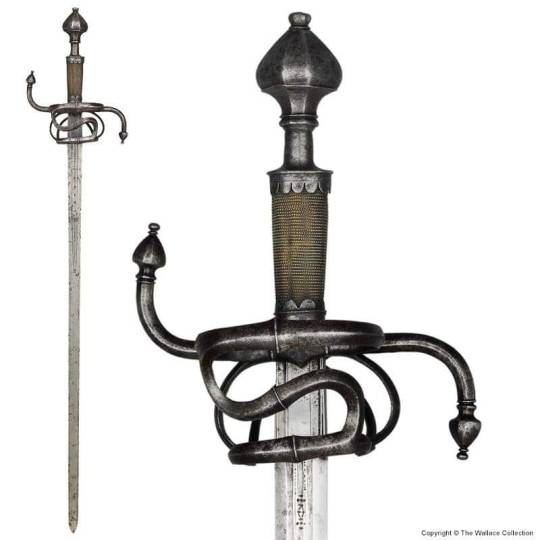
A beautiful complex-hilted Longsword,
OaL: 37.6 in/95.4 cm
Width: 1.3 in/3.2 cm
Weight: 6.9 lbs/3.13 kg
Swiss hilt and Spanish blade, ca. 1600-1625, housed at the Wallace Collection.
181 notes
·
View notes
Text
PPP - I don’t even know the date
My last day of NC practice was a few weeks ago. We've moved to OH since then, a massive transition. It's been hard, I won't lie. Lots of tears, lots of doubts. My last NC praccy was pretty much all I could ask for: friends, beer, and one last bout with Coach (who won 5-4, damn him). I miss them all dearly. OH practice won't start until August, when I can hopefully afford to be part of a club again. We'll see. I'm worried that was my last practice in a long time. It's scary. Also I'm shit at posting these. I don't think I'll ever get better. O whale
0 notes
Text
I have a wylde idea
I’ll share it with you all, just for fun.
In my mind, the guards and principles of fighting with a two-handed sword such as the longsword, can be applied to fighting with the Arming Sword.
To my knowledge, there is no treatise that covers the single-handed medieval sword in use without a buckler, however there must have been instances in which individuals fought with a single-handed sword, and without something in their off-hand, and I believe the guards of the longsword can be adapted for that purpose. For this post, I’ll be sticking to Italian longsword, since that’s what I know best.
We shall begin with the guards of Fiore Furlano de’i Liberi de Cividale d’Austria.

(Why would he start there? Say that image looks kinda familiar…)
There are twelve main guards for the two-handed sword in Fiore’s manuscripts, and one of the most popular is the Posta di Donna, the Woman’s Position.
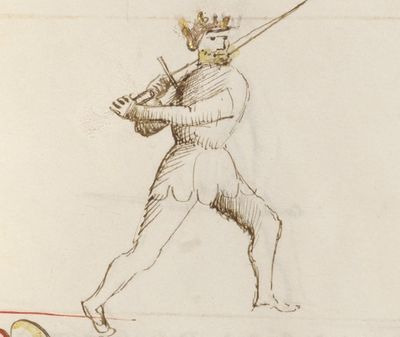
This posta is quite simple to adapt. Simply removing the off-hand from the sword and retaining the same position creates a comfortable and useful guard for the one-handed sword.
Richard Marsden, in his interpretation of how Polish sabre is used, mentions a very similar guard, with the sword lying on the shoulder and either the strong or the weak leg leading, so we know that a similar guard exists for other one-handed weapons.
This interpretation works just as well with the other versions of Donna that Fiore shows.
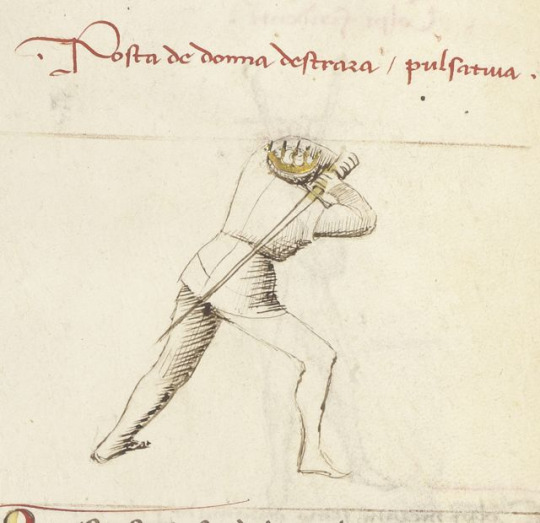
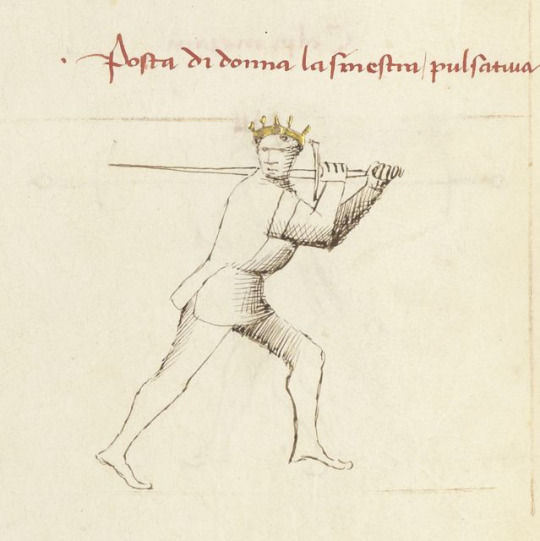
The next is the Dente di Cinghairo, Boar’s Tooth.

Boar’s tooth is an odd one, and shoving the pommel of a one-handed sword into your weak side hip isn’t the most comfortable position, however if you relax enough it is possible and sustainable, and creates a good opportunity to utilize Riversi Sottani, ascending cut from the left side, often with the false edge.
We see something not dissimilar to this with Marrozzo’s Coda Lunga e Stretta.

It is held low and, as Marozzo says, “strongly to the right of your enemy,” which would be your left, placing the sword inside the leading leg. By simply dropping the point and retracting the hand, we have our single-handed Dente di Cinghairo.
The next two are very simple. Fiore’s Posta Longa, Long Position.
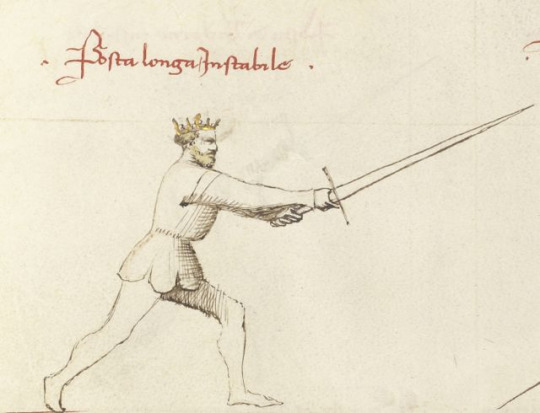
This position simply requires the extension of the arm with the point on line, a position we see in rapier all the time.
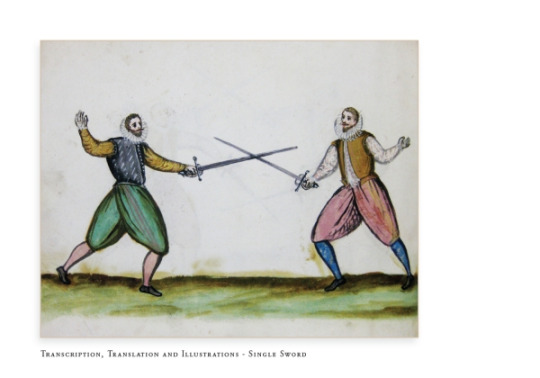
Equally, Posta Breve, Short Position, is the same position, but with the arm tucked back a bit further.
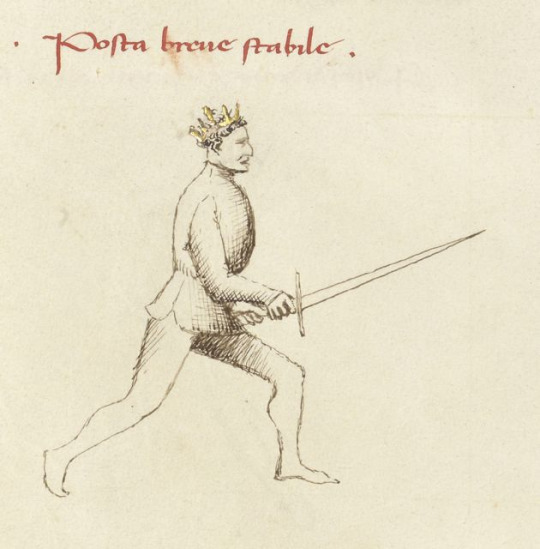
Both of these positions are good for thrusts.
Porta di Ferro Mezzana, Middle Iron Gate, is another easy one to mimic, though it has no single-handed parallels that occur to me.
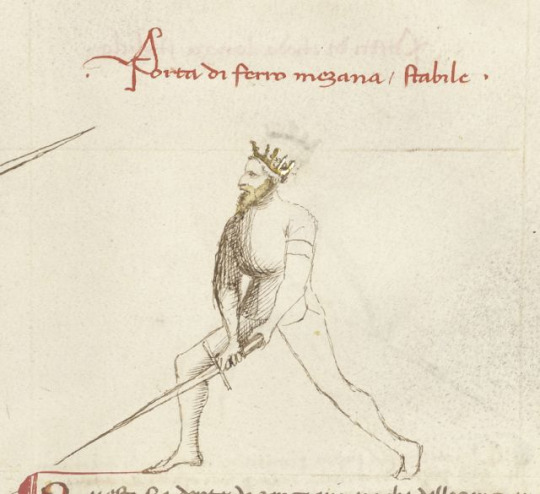
It is, however, an excellent position for both the thrust, and for the sottani, the rising cuts.
Now, the infamous Posta di Bicorno, the Two Horn or Anvil Position.

Bicorno is a difficult enough guard to deal with on its own, just look at the thing. It’s very confusing, and I’ve see a large number of interpretations in its use. Guy Windsor, a very knowledgeable HEMAist wrote an entire essay on how he got to his interpretation of Bicorno.
That being said, most interpretations have the lead hand in what could be described as a convoluted prime position, with the fingernails pointing to the right, and the knuckles toward the sky. This position is sustainable with the one-handed sword, and allows you to move the tip of the sword swiftly without much movement.
Fiore’s Posta di Coda Longa, Position of the Long Tail, is another simple one, and one we see in sword and buckler fighting.
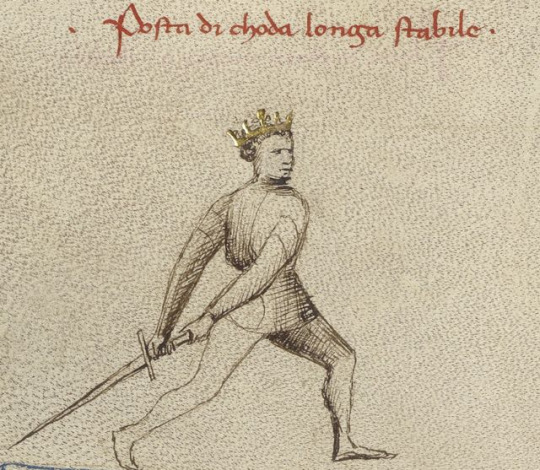
Simply swing the sword back behind you, and you’re now in a position where the opponent can’t judge the length of your sword (and therefore if you can hit them or not,) and you can preform all seven of Fiore’s blows of the sword from this position.
As I said before, Long Tail shows up in sword and buckler systems, notably the I.33 (0.33)
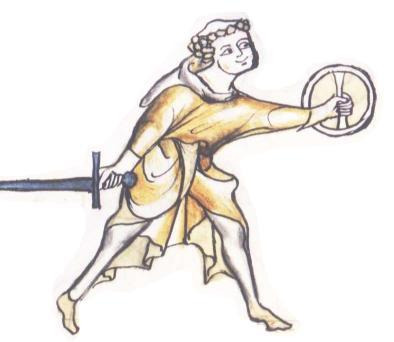
We’re closing in on the last of Fiore’s guards, and this is when things begin to get more complicated.
Fiore’s Posta di Fenestra, Window Position, is entirely doable with the on-handed sword, however has no parallels to my knowledge in other one-handed sword systems.
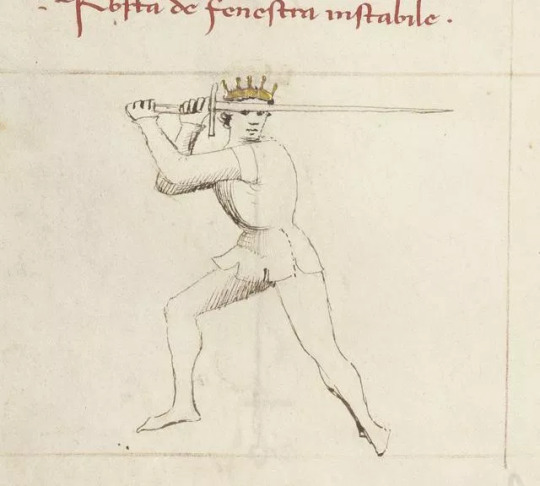
It does, however, provide an excellent place to throw all of the blows from, and is a highly mutable guard.
Next is Posta Frontale, Front Position, also known as Posta di Corona, Position of the Crown.
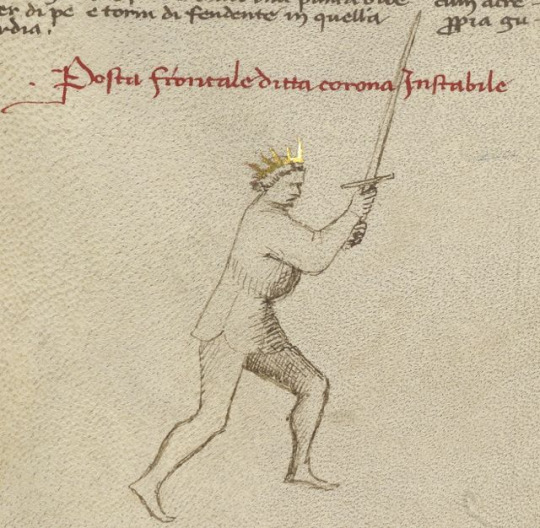
A curious guard, and another of the more divisive ones. It’s clearly easy to mimic with the one-handed sword, however it leaves your hands terribly exposed.
Therefore, this is not a guard to hold for long spans of time, as several of the others are. Rather, it’s a position to be taken in specific circumstances, possibly such as when the swords cross, or when you’re preforming the combination of attacks Fiore details in the posta’s description.
We’re into Fiore’s last two now.
Dente di Cinghairo Mezzana, or Middle Boar’s Tooth, is much like Boar’s tooth, but weighted on the back leg.
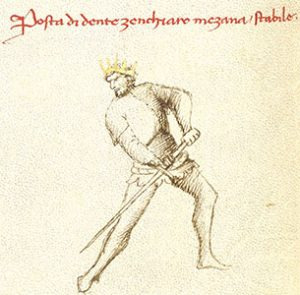
Entirely plausible with one hand, however what I find interesting is that, if the point of the sword is turned around so that it faces the rear, it’s much like the primary posta shown by Fiore for his use of the sword in one hand.
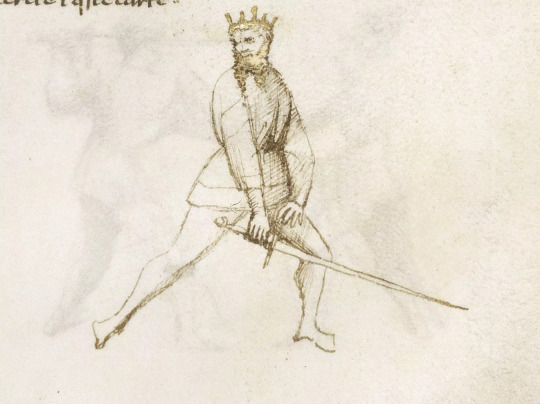
Fiore’s final guard, and the biggest wrench in my ideal machine, is Tutta di Porta Ferro, Full Iron Gate.

This position cannot be held with a one-handed sword. It’s too awkward for the wrist, simply uncomfortable and impractical. So, I started toying around with it. What could be like this, and work with the one-handed sword?
The solution was rather simple. I simply turned my hand over so the sword was leaning over my left leg with the point off to the left. A similar position, but a comfortable one for the leading wrist.
The position felt familiar to me however, as though I’d seen it before, so I switched leading legs and found myself here
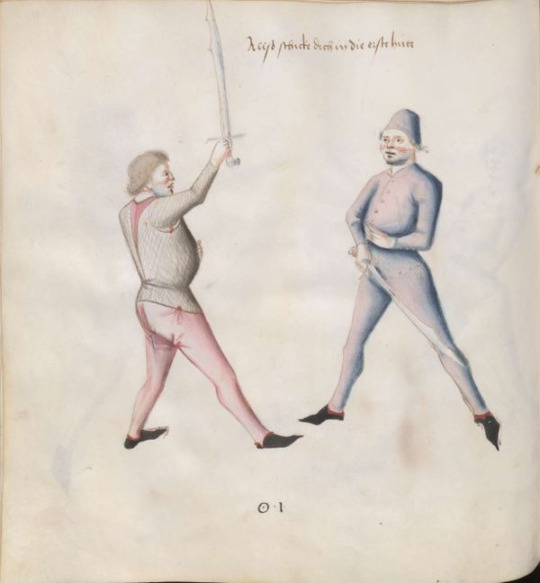
in the guard sometimes known as Alber, and shown in a number of German treatises, often with the messer.
I then noted that if, from this position, you placed your weight on the back leg rather than the front, you would wind up in Fiore’s very one-handed sword position that I pictured before.
This final guard is certainly the largest issue with my hypothesis, as the guard simply cannot be held as shown with the one-handed sword, and finding a comfortable position means changing the guard quite significantly, to the point of questioning if one should even call it the same guard. However, I believe that with the previous guards, I have provided enough support to my hypothesis to consider its validity.
In the interest of cutting an immense post short, I will speak only on two guards of the other Italian longsword master, Philippo di Vadi Pisano. I will begin with Posta di Falcone, the Position of the Falcon.
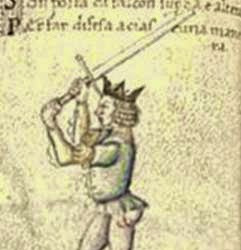
This posta is exhibited in German longsword fighting as well, where it’s known as Roof, and it appears in messer fighting under the same name.
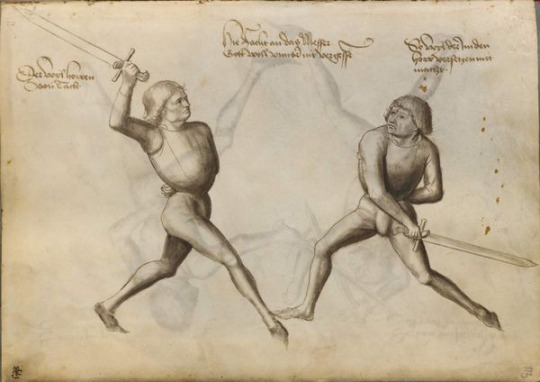
Thus, the Posta di Falcone is a simple guard to mimic with the one-handed sword.
The final posta is Vadi’s Posta di Vera Finestra, Position of the True Window.
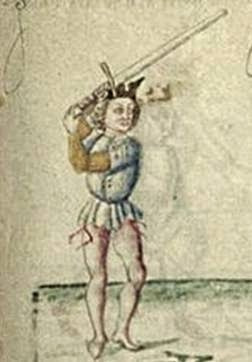
This one is a curious one, with the sword up and behind the head, however it’s sustainable with the one-handed sword, and even has precedent in Fiore’s own manuscript.
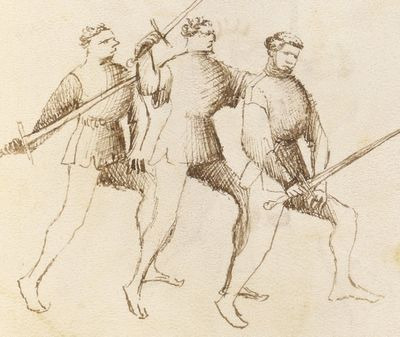
The man in the middle is holding a very similar position.
I feel that an important note to end on is that there is no historical evidence that this was ever done, and there is little evidence to support the idea that people frequently fought with nothing but a single-handed sword in the first place.
This is simply an idea of mine on the potential application of the principles of fighting with the two-handed sword to fighting with the one-handed sword. I hope this post has been entertaining, educational, or both, and I would love to hear rebuttals and additions to the idea. Cheers!
270 notes
·
View notes
Quote
…I want you to understand that it is a fine skill to know well how to teach others, more so than it is to know well oneself how to fence; because a man who knows how to fence well, but not how to teach, is only good for himself, whereas one who knows how to teach well is of benefit to many people; yet one who understands how to do both has twice the virtue; and those are two distinct skills"
Achille Marozzo (Check out the Marozzo tag for more details on this historical fencing master)
21 notes
·
View notes
Text
Recently I’ve been looking at a manuscript by a Giovanni Antonio Lovino of Milan, written ca. 1580. Oddly enough, Lovino appears to have dedicated the manuscript to Henry III of France. Lovino covers dueling with one handed sword,
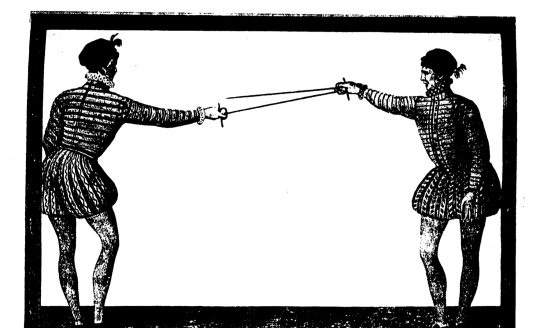
Sword and Dagger,
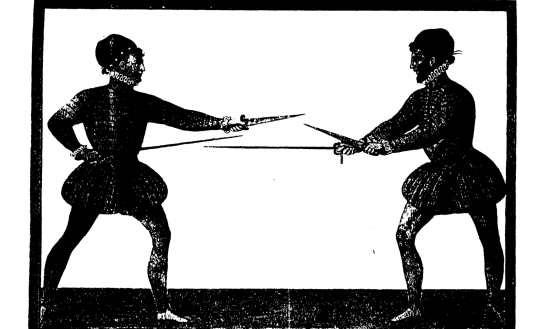
Sword and Cloak,

Sword and Buckler,
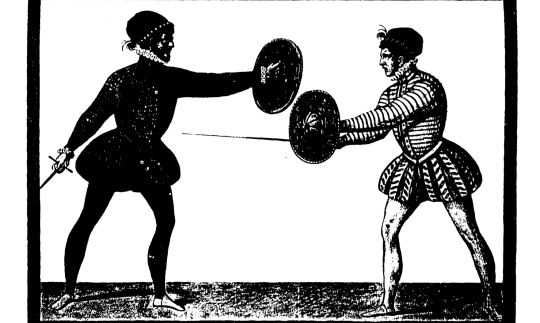
he’s one of the few that covers Sword and Rotella,
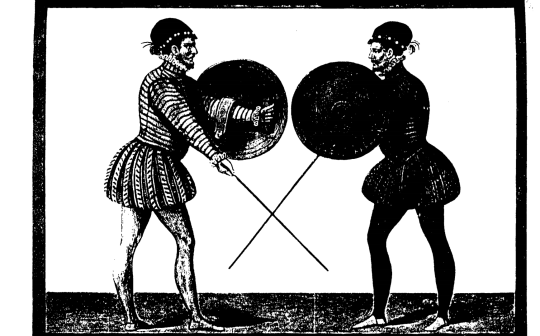
a shield he calls a “targa”, a Target shield,
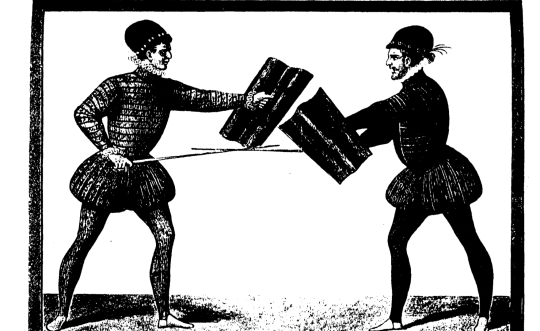
he also covers dueling a left-handed fighter,

dueling with a case of sword (a case of sword eing a pair of asymmetric swords kept in the same scabbard, used one in either hand),
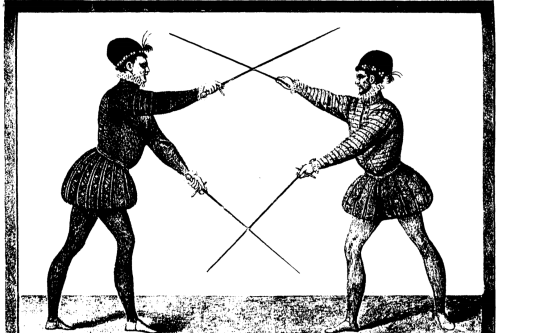
a “hand-and-a-half sword” (his words, not mine),
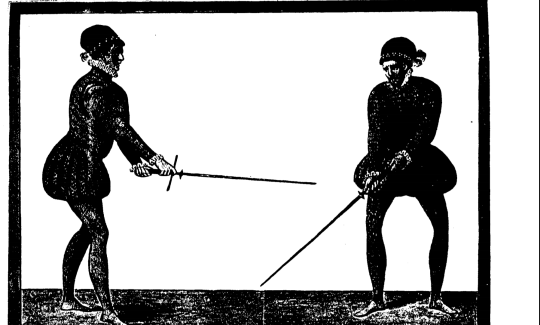
two-handed sword,
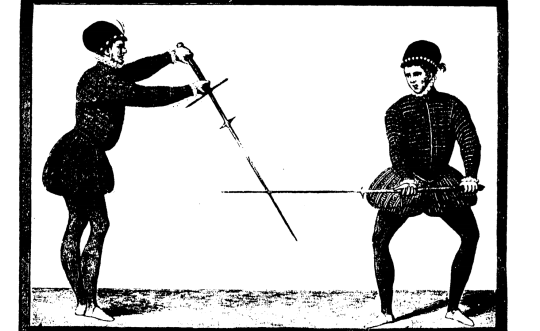
There are four more, but this is my photo limit, so I’ll reblog and continue.
2K notes
·
View notes
Video
instagram
#exercise from our #rapier class. A feaint is given to draw the opponent into #attacking, pressing into the #sword. The counter is an envelopment, thrusting to the chest.
We #teach in #frimley, #crowthorne, #tulsehill and #brittany
#fencing #HEMA #martialarts #combatsports (at Frimley Green) https://www.instagram.com/p/ByGrDgkHh2s/?igshid=1uagzjuq4z12l
10 notes
·
View notes
Text
Post Practice Pondering
I have unlocked the secret to smooth fencing. It is always moving your feet. Always. Thank you for coming to my TED talk.
2 notes
·
View notes
Text
Tangentially related activity
Been doing some bouldering thanks to a good friend. It’s a fun activity, very reminiscent of fencing: you have to think about how you’ll approach the enemy and if you’re not properly prepared, you’ll get hurt! I’ve only been a few times but I think it’ll really help my fencing; it helped me be more aware of where my body is in space, how I’m moving, and where I need to keep my feet to stay balanced. Fencing praccy is tomorrow, let’s see how this goes.
0 notes
Video
youtube
A number of things here may depend on one’s interpretation of Fabris and there are other rapier masters out there that one can learn from but this could still be quite an interesting video to many that want to get into rapier.
Rapierists is a great group to check out on fb if you want to ask questions this video may have left unanswered for you.
30 notes
·
View notes
